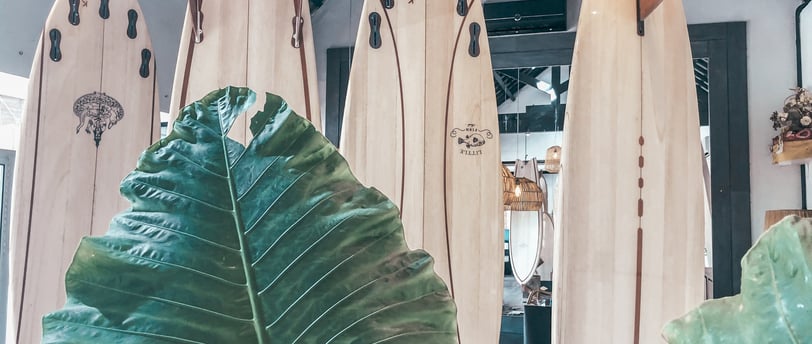Why Balsa Is Used in Making Surfboards
Explore the history and versatile uses of balsa wood, from ancient rafts to modern surfboards. Learn why this lightweight, strong, and sustainable material remains essential in industries like aerospace, marine, and renewable energy. Discover how balsa surfboards offer eco-friendly performance and durability for surfers. 🌿🏄♂️ #SustainableSurfing
Kayu Team
2/12/20252 min read


The History and Uses of Balsa Wood
Balsa wood has played an important role in various industries for centuries, thanks to its lightweight, strong, and buoyant properties. From ancient watercraft to modern-day surfboards and model building, balsa has remained a key material in crafting durable and high-performance products.
Origins and Natural Growth
Balsa wood (Ochroma pyramidale) is native to Central and South America, growing abundantly in rainforests, particularly in Ecuador, which is the world’s largest exporter of balsa. The trees grow rapidly, reaching full maturity within 5 to 10 years, making them a sustainable and renewable resource.
Historical Uses of Balsa Wood
1. Ancient Rafts and Watercraft
Balsa wood’s natural buoyancy made it a perfect choice for rafts and boats used by indigenous peoples of South America. The most famous example is the Kon-Tiki raft, built by Norwegian explorer Thor Heyerdahl in 1947, which successfully sailed across the Pacific Ocean, proving ancient civilizations could have made long-distance sea voyages.
2. World War II Applications
During World War II, balsa wood was used extensively for airplane construction due to its lightweight strength. It helped reduce aircraft weight while maintaining durability, making planes more efficient and easier to maneuver.
3. Model Building and Crafts
Balsa’s soft texture and easy workability have made it the go-to material for model airplanes, boats, and architectural prototypes. It is favored by hobbyists and engineers for its ability to be easily shaped, cut, and glued.
Why Balsa Is Used in Surfboard Construction
Modern surfboard manufacturers favor balsa for its combination of performance and sustainability. Unlike synthetic materials such as polyurethane (PU), balsa offers a more natural flex, strength, and lightweight buoyancy, making it an excellent alternative for eco-conscious surfers.
Key Benefits for Surfboards:
Lightweight & Buoyant – Helps surfers paddle efficiently and ride waves smoothly.
Strong & Durable – Resistant to dings, cracks, and impact damage.
Eco-Friendly – A renewable and biodegradable resource with a low environmental footprint.
Natural Aesthetic – Provides a handcrafted, organic look that sets balsa surfboards apart.
Modern-Day Uses of Balsa Wood
Beyond surfboards, balsa continues to be a key material in various industries:
Aerospace and marine industries – Used for lightweight, high-performance applications.
Furniture and insulation – Valued for its shock-absorbing and insulating properties.
Wind turbine blades – A core material in eco-friendly energy production.
Conclusion: The Timeless Appeal of Balsa Wood
From ancient rafts to cutting-edge surfboards, balsa wood has proven its versatility, sustainability, and strength. Its ability to provide lightweight durability makes it a favorite among manufacturers and artisans across the globe.
At Kayu Surfboards, we embrace the heritage of balsa by crafting high-quality, eco-friendly surfboards that honor this incredible material. Explore our selection and experience the legacy of sustainable surfing firsthand.
Discover our handcrafted balsa surfboards today and ride the waves sustainably!
Crafting eco-friendly surfboards for all surfers.
CONTACT US
quick get in touch
EMAIL: info@kayusurfboards.com
VISIT US: Jl. Pantai Berawa 101, Tibubeneng, Kec. Kuta Utara
OPENING HOURS: TUESDAY-SUNDAY 10AM-7PM
© 2024. All rights reserved.


